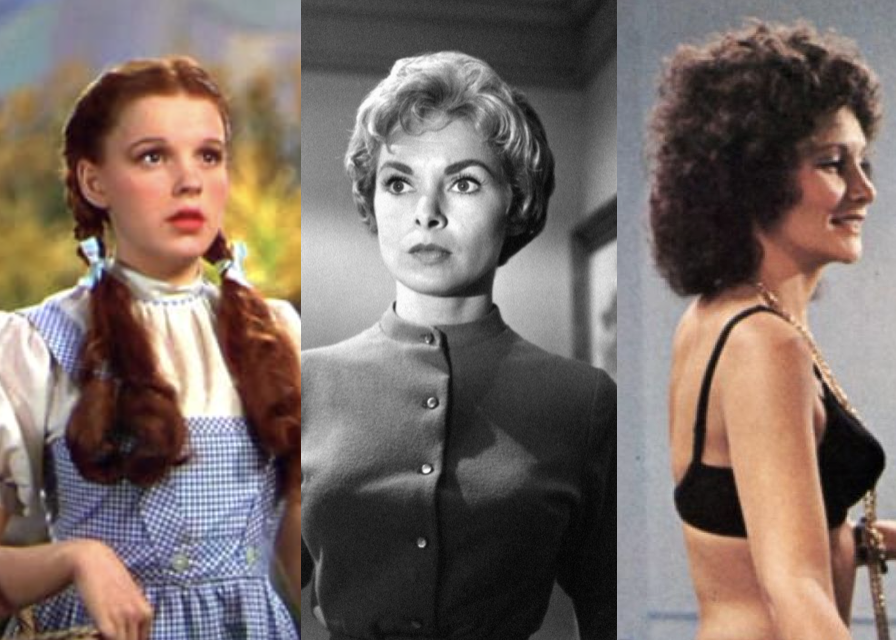
When Joseph Breen and William Hays, the heads of the Motion Picture Producers and Distributors of America, sat down to read scripts and review films, most people assume they were looking for explicit sexual content, but their mandate was much broader. Their guide was worded in vague, open-ended language that gave them free rein to cut any film to pieces, or condemn it completely.
The first principle listed in The Motion Picture Production Code of 1930, also known as the Hays Code, states, “No picture shall be produced that will lower the moral standards of those who see it. Hence the sympathy of the audience should never be thrown to the side of crime, wrongdoing, evil or sin.” The second principle reads, “Correct standards of life, subject only to the requirements of drama and entertainment, shall be presented.” Later, it advises that, “the treatment of low, disgusting, unpleasant, though not necessarily evil, subjects should always be subject to the dictates of good taste and a regard for the sensibilities of the audience.” Phrases like “moral standards”, "correct standards”, and “good taste” have no objective nor legal definition.
The guide might have used more quantifiable and specific language had the film industry known what would happen next. Breen and Hays were never meant to truly censor anything. They were not hired to protect the public from misguided filmmakers, or to be the watchdogs of decency. They were hired as part of a public relations scheme, a grand gesture of goodwill made by the film industry. Hollywood needed to clean up its act, and they made a show of hiring upstanding citizens to keep them in line.
It only took a short time for the plan to backfire. Hays alternately provoked and soothed the public's sense of offense and outrage to solidify his position. He harnessed the power of the Catholic Church and a phalanx of conservative critics to separate himself and his “agency” from the film industry and truly become what he was meant to be in name only; a self-righteous culture czar with the film industry on an ever-tightening leash.

Hays and Breen were not concerned with the integrity of a film or an artist’s vision. That wasn’t their job. They used their position to strip films of what they saw as dangerous content, and left the studio to deal with what remained. If a studio resisted Hays, Breen, or the Catholic authorities, the pre-assembled panel of critics could be marshaled to destroy the film’s prospects.
Complaining specifically about Breen and Hays, Samuel Goldwyn, the CEO of MGM, explained, “Our fear of what the censors will do keeps us from portraying life as it really is. We wind up with a lot of empty, little fairytales that do not have much relation to anything.”

Goldwyn was likely more concerned with the bottom line than a given film’s integrity, but that does not preclude his recognizing the chilling effect censorship had on the industry. Purifying a film often meant stripping it of any depth or dimensionality. Censorship was not just about sex and nudity, it was far more invasive, handicapping writers, actors, and directors by cutting out sections from the spectrum of human behavior.
Characters had to be two-dimensional representations of either an upstanding citizen with a heart of gold, or a bitter villain with hate in his or her heart.
In A Streetcar Named Desire and Cat on a Hot Tin Roof, the richly rendered characters with their conflicted motivations and complex interactions had to be truncated, abbreviated, and stripped of substance. It infuriated Tennessee Williams and Elia Kazan, both of whom had to struggle to get the movies released. American audiences were being deprived of what could have been a deep and moving drama, and offered instead a shallower world of heroes and villains.

The absence of sex is the obvious change, but the dumbing down of the entire narrative is harder to see, and in many ways more damaging. Filmmakers had their hands tied and were unable to develop truly adult content. The term “adult content” itself is almost exclusively used to describe sexual content, but a film like Bergman’s Winter Light surely qualifies as adult. Not because it is graphic, but because it deals with adult themes and targets adult audiences. Such a film would have been unthinkable in the first two-thirds of the 20th century in America.
All of this examination and censorship was not applied evenly across media. Strangely, literature and stage plays were given far more latitude. Tennessee Williams had far more freedom to write what he wanted in a book or stage script. Joseph Breen explained it this way, “Motion pictures, unlike stage plays, appeal to mass audiences. Because they are exhibited rather indiscriminately, material which might be perfectly valid for dramatization on the stage may be completely unacceptable when presented in a motion picture.”
Even before Breen, the Supreme Court ruled unanimously in Mutual Film Corp v. Industrial Commission of Ohio that motion pictures were not covered by the first amendment. They declared that free speech applied only to words. Spoken words and printed words were part of the “public forum” and influenced public opinion, whereas films were just entertainment.
This was one reason for singling out cinema, but there were more. The Legion of Decency (a Christian organization) claimed, “In itself, nudity is not immoral and has long been recognized as a legitimate subject in painting and sculpture. However, in the very different medium of the motion picture, it is never an artistic necessity. The temptation for filmmakers to exploit the prurient appeal of nudity in this mass medium is so great that any concession to its use will lead to wide abuse.”
Cinema was either so important it needed to be regulated, or so insignificant it didn’t need to be protected. Either way, it was treated differently from all other media.
This double standard hindered film’s development. Films like The Best Days of Our Lives or Lifeboat had to contort their characters and messages into simpler terms in order to eliminate ambiguity. Ambiguity is at the heart of the problem. Conservative ideology is essentially driven by a desire to “conserve” a more simple way of evaluating society and culture. Conservatives want to keep their world restricted to simple binaries. People are either good or bad, female or male, hardworking or lazy, black or white. Any nuance is a threat, a chink in the armor of simplicity. Social problems have to be obvious. Why is this group of people poor? Because they don’t work hard enough. Why are these people criminals? Because they are evil. The primary mandate of the conservative is to keep things simple.
This runs in direct opposition to what many, if not most artists are trying to accomplish. When Fritz Lang was in Germany, he made morally complex and challenging films like M. Once he immigrated to the United States, he had to tone everything down and make films like Scarlet Street and The Big Heat, which to Lang’s credit, still managed to depict deep inner conflict, but not as deeply as he had back in Germany.

Once Hays and Breen retired and censorship was no longer centralized under one agency, the film industry began to emerge from its chains. The industry established the letter rating system (G, GP, M,, and X). X-rated films were never meant to be associated with sexual content. The label was meant to indicate adult content. One of the first X-rated films was not a pornographic movie, it was John Schlesinger’s Midnight Cowboy. When asked about the film, Schlesinger explained, “The young people in this country are dying to see something on the screen they can believe. We are told that the bulk of the audience is between 15 and 24 and they are the very ones who are in an uproar as never before. Sometime someone is going to have to start taking some risks.”

This last sentence highlights another aspect of why film was treated differently from other media. Schlesinger was not referring to the “risk” of being put in jail, he was referring to monetary risk. Critics and censors may concern themselves with their personal ideas of morality, but cinema is distinguished from other media because it involves far more money.
Publishing a book costs comparatively little next to producing a Hollywood feature film. The amount of time, effort, people, and resources involved in movie production necessitates a substantial investment of capital upfront, and so requires considerable profits after release. This results in a kind of baked-in censorship where films have to be salable, or have to conform to what investors imagine will be salable. The problem then becomes a fear that if a film ventures into new territory, it might not return on its investment. The guiding principle is no longer a sense of morality, but a fear of anything out of the ordinary.
In his book Manufacturing Consent, Noam Chomsky explains that censorship is used to limit what is broadcast to what everyone already knows and accepts. He points to the television news and explains that simply by limiting the amount of time an individual can speak, the news channel ensures that the subject cannot say anything out of the ordinary. Shoving a microphone in the face of a woman crying in front of her burning house allows her to say she is sad, but if she wants to say something about problems with her city’s infrastructure, or how the fire department is run, she would need more than 4 seconds of airtime.
This kind of censorship doesn’t have to be a deliberate plot to silence new points of view, it can simply be the normal functioning of the free market. News programs don’t care what you say in terms of politics, but whatever you say has to conform to what the producers believe the public wants to hear, or what the producers think the corporations who buy air time for commercials think their audience wants to hear.
Hollywood films are subject to the same limitations. Avengers: Endgame cost 256 million dollars to make and raked in 2.79 billion dollars. No one is going to hand 256 million dollars to some creative type and ask them to make something new and original. What investors want is something proven to work. Intimate, three-dimensional portraits of characters wrestling with complex motives might work, but they might not. Big breasts and explosions are more reliable.

Back in the 70s, before the Marvel behemoths, John Cassavettes had already identified the problem. He explained, “I’ve never seen an exploding helicopter. I’ve never seen anybody go and blow somebody’s head off. So why should I make films about them? But I have seen people destroy themselves in the smallest way, I’ve seen people withdraw, I’ve seen people hide behind political ideas, behind dope, behind the sexual revolution, behind fascism, behind hypocrisy, and I’ve myself done all these things. So I can understand them.” Later he would also echo Schlesinger’s sentiment saying, “Films today show only a dream world and have lost touch with the way people really are.”
Whether it is strident paternalism, social engineering, religious conservatism, or blind desire for profit, all of these motives result in handicapping a filmmaker’s ability to dig deeply into the human experience. Whether the censors are out to eliminate sex, immoral behavior, or radical politics, the effect still comes down to stripping a story of its substance and reforming it into a simplistic conflict where characters have clear motives and stories resolve with clear endings. Ultimately, the most important loss is one of depth. A culture’s stories will naturally reflect a culture’s values. The question is what a given culture is willing to see when it looks in the mirror.

If you enjoyed this article you might also enjoy this - https://filmofileshideout.com/archives/a-brief-rant-about-my-cinema-students-and-american-optimism/



